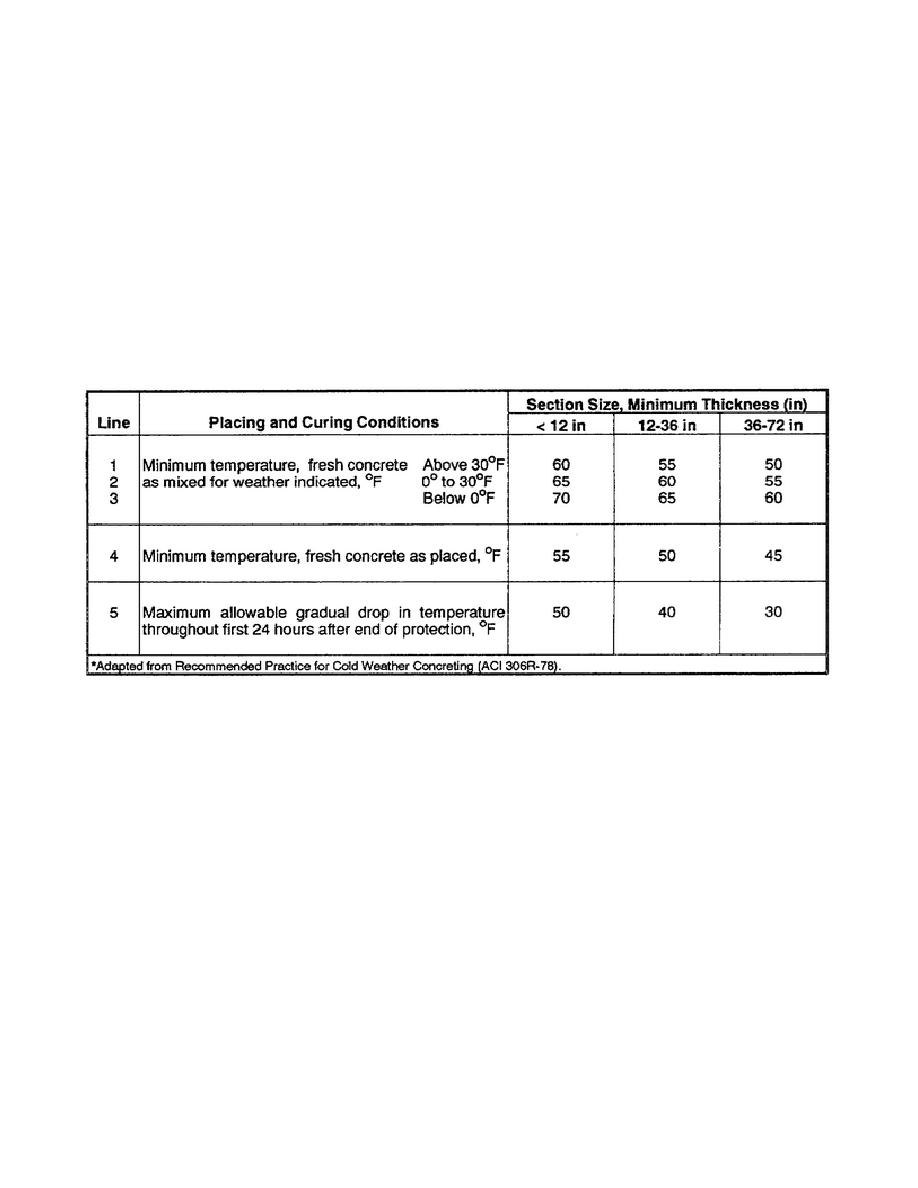
Then frequent sprinkling, the use of wet burlap, and other similar means of retaining moisture for longer periods
are the best methods to use.
COLD-WEATHER CONCRETING
Freeze Protection
You need not suspend concreting during the winter months, if you take the necessary steps to protect the concrete
from freezing in temperatures of 40...F or lower during placing and the early curing period. In your prior planning,
include provisions for heating the plastic concrete and maintaining favorable temperatures after placement. The
temperatures of fresh concrete should not be less than that shown in lines 1, 2, and 3 of Table 4-4. Note that
lower temperatures are given for heavier mass sections than thinner sections, since less heat dissipates during the
hydration period. Because additional heat is lost during transporting and placing, the freshly mixed concrete
temperatures given are higher for cold weather.
Table 4-4. Recommended concrete temperatures for cold-weather construction (air-entrained concrete).*
To prevent freezing, the temperature of the concrete should not be less than that shown in line 4 of Table 4-4 at
the time of placement. To ensure durability and strength development, you may need to provide further thermal
protection to make sure that subsequent concrete temperatures do not fall below the minimums shown in line 5 of
Table 4-4 for the time periods given in Table 4-5. Concrete temperatures over 70F are seldom necessary because
they do not give proportionately longer protection from freezing, since the heat loss is greater. Besides, high
concrete temperatures require more mixing water for the same slump, and this contributes to cracking due to
shrinkage.
EN5466
4-26



 Previous Page
Previous Page
